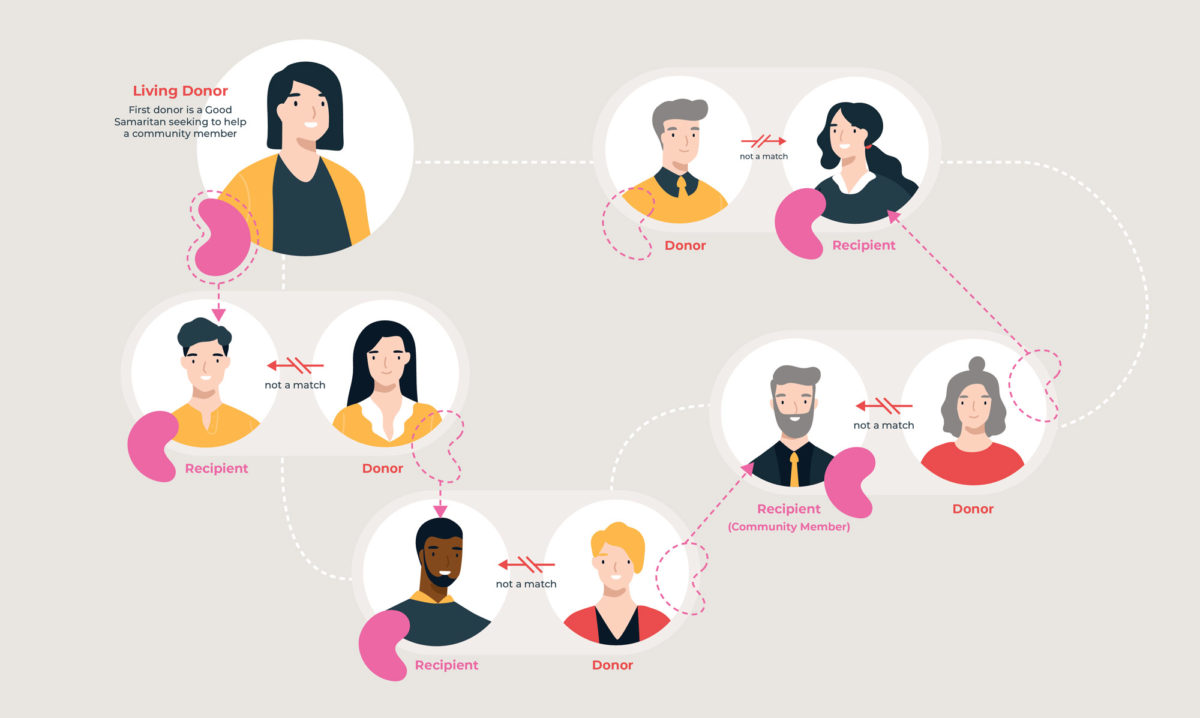What is the kidney pairing algorithm and how does it work?
Kidneys for Communities has ushered in an entirely new paradigm for living kidney donation called “community-directed donation,” allowing living donors to handpick the specific community that they wish to help with their life-saving donation.
But how does Kidneys for Communities make that work? What if a donor isn’t a match for a recipient? How can we guarantee that your selected community organization will benefit from your kidney donation, even if there isn’t currently a matching recipient?
The answer is simple, and also incredibly complicated.
Community-directed donation relies primarily on the revolutionary organ pairing algorithm that Nobel Prize winner Al Roth introduced in 2008. You might have read about the pairing algorithm in the New York Times or listened to a Freakonomics podcast about it. The concept is truly groundbreaking.
Essentially, if your blood type is not a match for the recipient, you can still donate your kidney to a larger pool of available kidneys, and the pairing exchange will swap yours for a kidney that does match your recipient. With a large enough pool of kidney donors, the exchange can actually use a single donation to complete a chain of donations. In other words, one person’s generous donation can be the missing link that connects several or even dozens of possible transplant matches.
It can be difficult to imagine how it works, but we created a simplified visualization that we think helps.

Kidneys for Communities relies on this pairing algorithm to also work for community organizations. When you donate your kidney, we work with our kidney exchange partner the Alliance for Paired Kidney Donation to find you a transplant recipient in your community of choice. And, if for some reason, there is not someone in your desired community who immediately needs the kidney, we ensure that one is available for a future transplant. It sounds complicated, but fortunately our partners make the entire process incredibly easy for our donors.
If you have any questions about kidney pairing or how we can help, contact someone from our team and we’d be happy to explain further.